Sorry that it’s been a couple of months since my last column. It’s become increasingly difficult to make a living in Canada as a small business and we’ve been focusing on trying to make ends meet. This column is not monetized, and I do this because I enjoy it. Sometimes it’s not easy to stick to a monthly schedule. We have been on the road a lot lately and events haven’t been as lucrative this year compared to last year. Paying our bills and putting food on the table takes priority over Forgotten Silver, but I plan to continue to write this column indefinitely even if that means sporadically.
With that caveat out of the way, I have recently decided to spend as much time and effort as I possibly can this year trying to use my business and other creative outlets to bring people joy. That will be my motto moving forward for East Coast Toys and Games, Forgotten Silver and our other pursuits (such as sponsoring DIY Wrestling here in Nova Scotia). That brings me to this month’s topic: Fun and Games Magazine.
This short-lived series is the first from a major American publisher that I have ever covered here. This thirteen-issue run is also not a comic book per se. Since it was published by Marvel Comics from 1979-1980 it is firmly an example of an American Bronze Age work, rather than an obscurity from the Canadian Silver Age (or is it?). All these qualifiers probably make Fun and Games Magazine seem like an odd choice for a Forgotten Silver column. Let’s take a closer look.
Fun and Games Magazine was created by Owen McCarron. If this name sounds familiar, it’s because McCarron was one of the leading figures of the early Canadian Silver Age, operating one of the only comic companies in Canada during the 1960s, Comic Page Features (later Comic Book World). I wrote about McCarron quite a few years back in my column “The Man They Call Reveen.” I have also discussed some of his environmental comics. From the 1960s through 1980s, McCarron wrote, drew and self-published dozens of giveaway comics for companies around Atlantic Canada.
Beyond this, McCarron worked for Halifax Herald Limited for thirty-two years. The company published The Chronicle Herald and Mail-Star newspapers and McCarron worked as a cartoonist and puzzle master for the papers, often collaborating with Bob Chambers, who was the company’s political cartoonist.
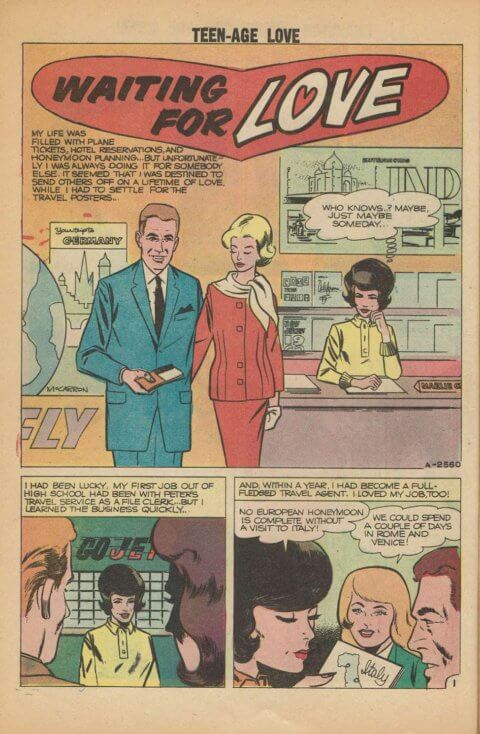
McCarron was talented, prolific and had a reputation for speed and reliability. During the early 1960s, he sometimes drew romance and war comics for Charlton, which caught the attention of Stan Lee. According to members of his family her drew an alternative cover for an early issue of Amazing Spider-Man, which was never used (and is still in the possession of his heirs). His continued relationship with Stan Lee provided him with the unique opportunity to have access to the Marvel Bullpen in New York, while occasionally contributing to a Marvel project without having to leave Halifax. As is part of the lore, McCarron convinced the Marvel Bullpen to send him unused art that would have otherwise been discarded. McCarron would subsequently utilize this unwanted artwork (alongside his own original drawings) in the various Marvel activity books that he was hired to created throughout the 1970s.
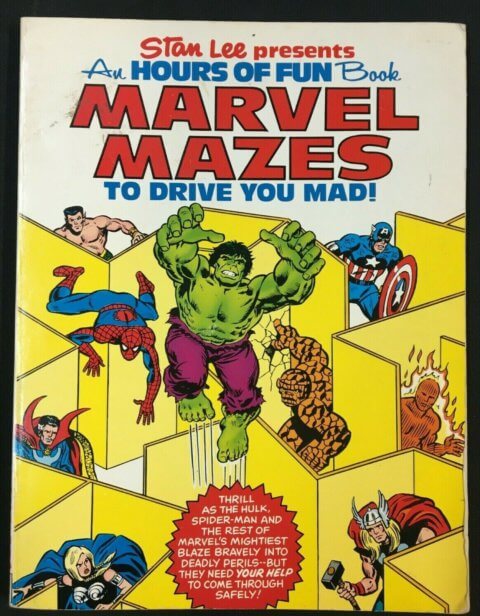
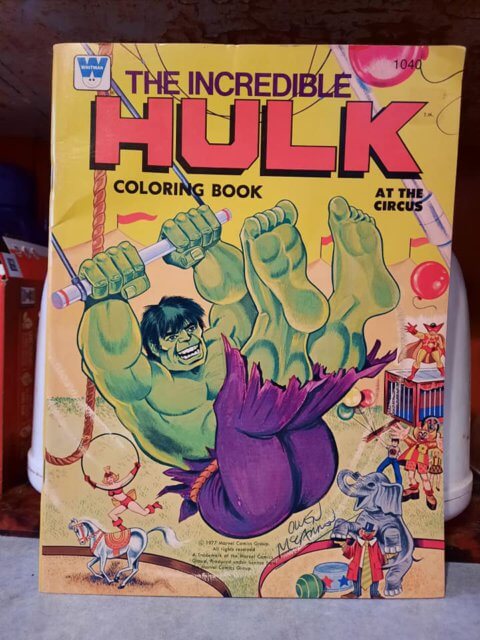
During the same decade, McCarron would contribute (as an artist or inker) to issues of Ghost Rider, Super-Villain Team-Up, Spidey Super Stories and more. Yet, it was his work as a puzzle master that ultimately became his best-known for Marvel. Marvel also employed Vladimir Kozakian as a puzzle master around the same time. Kozakian did a series of maze paperbacks for Marvel through Tempo Books in the 1970s. That said, I am not sure if McCarron and Kozakian ever collaborated.
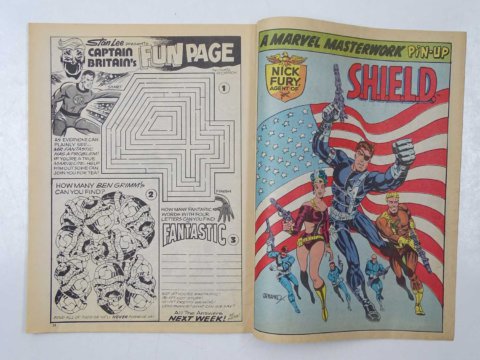
Eventually, McCarron’s puzzles would start appearing inside Marvel comic books. The earliest examples I can find are from the mid-1970s, with his “Captain Britain’s Fun Page” appearing in issues of Marvel UK’s Captain Britain series beginning with the first issue in 1976.
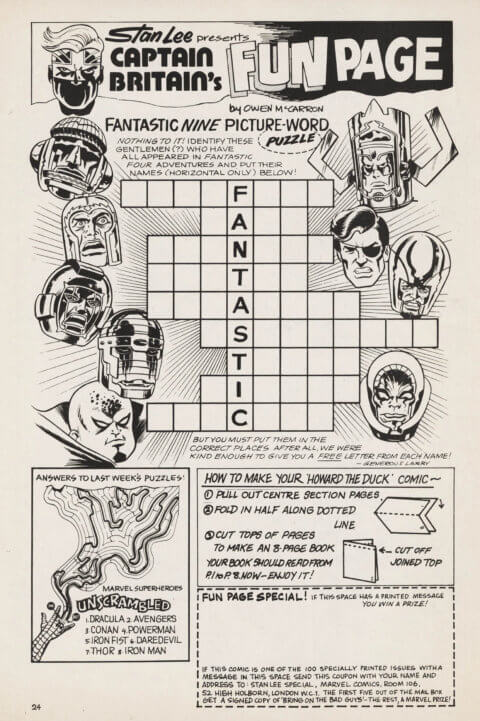
All of this culminated in September 1979 with the first issue of McCarron’s Fun and Games Magazine. The publication ran monthly for thirteen issues ending in September 1980. Although the series is referred to as a magazine, the final product is standard Bronze Age comic size.
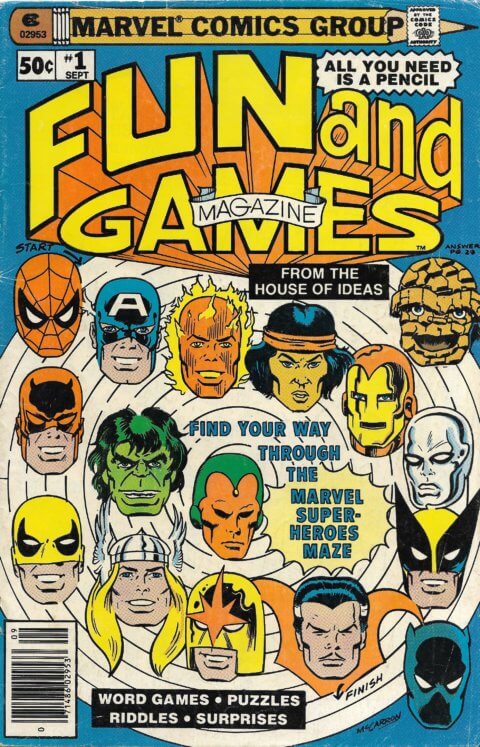
Every issue features original artwork by McCarron, as well as puzzles and mazes of various varieties that relate to Marvel characters in one way or another. From what I can tell most (if not all) of the interior art is McCarron’s. In fact, all the issues were written and edited by McCarron too. This afforded him an unusual amount of autonomy and freedom from Marvel and Stan Lee. However, most of the creations are not signed, so there is a possibility that some of the artwork may be the result of McCarron recycling material that he collected from the Marvel Bullpen over the years. Later issues of the series include Andy Yanchus as colorist. Yanchus joined Marvel in the mid-1970s after working for a decade for Aurora Plastics’ on its famed Monsters Scenes line.
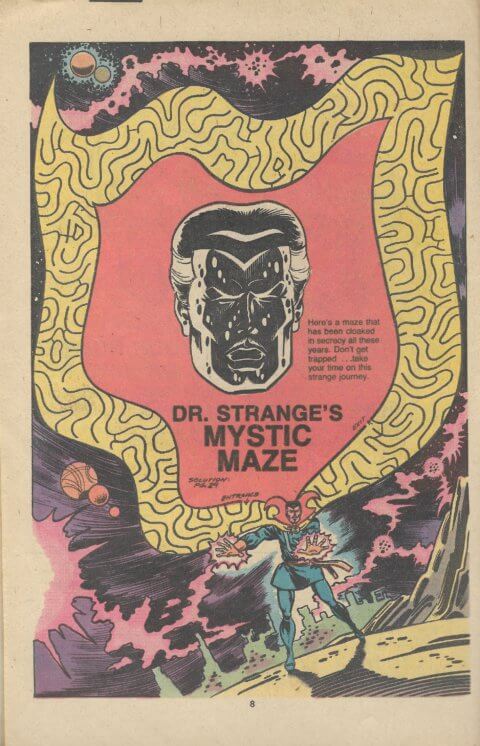
Going through some of these old issues of Fun and Games Magazine a couple of things stand out to me. First, McCarron was a world-class artist. Even though he is best known for giveaway comics, his work with the Chronicle Herald and later colouring and activity books, McCarron could have been a top tier artist for Marvel or DC if he chose to be. His career trajectory in Halifax presumably afforded him far more opportunities than what Marvel or DC had to offer. He was extremely in-demand at this point in his career and had the ability to be choosey.
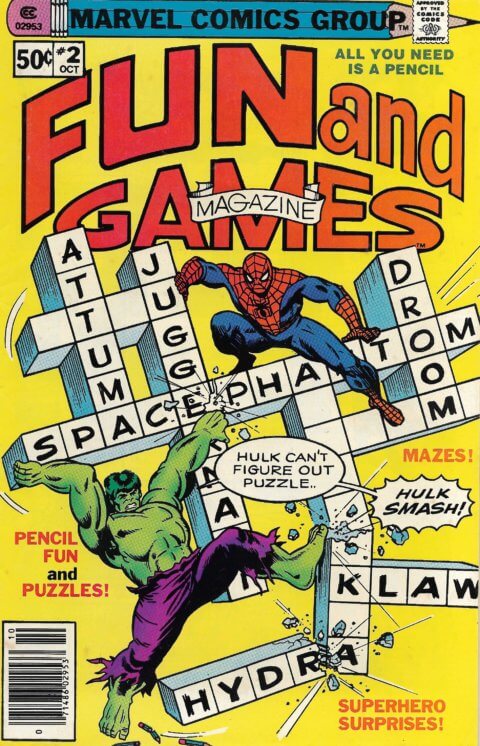
Something else that really stands out is that some of these puzzles are quite difficult. I had assumed that the games would be juvenile, but quickly found myself stumped by some of the puzzles.
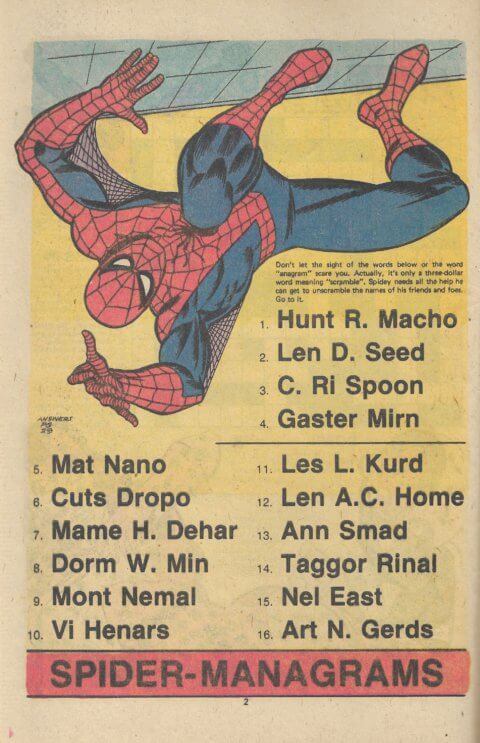
It’s probably a good thing that the solution to each puzzle is provided at the end of every issue. Otherwise, this would be torture. As soon as I learned that “Cuts Dropo” is an anagram for Dr. Octopus it all made sense. Maybe I’m just not good at solving anagrams…
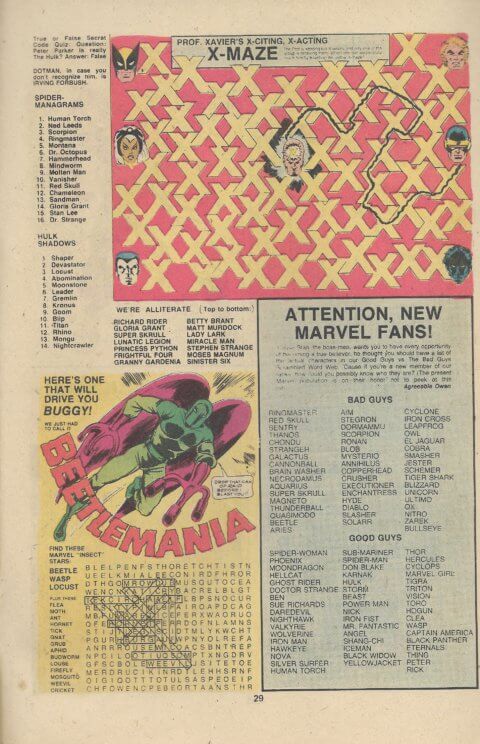
Something else that jumped out at me as I was going through my stack of issues of Fun and Games Magazine is how McCarron doesn’t only use A-list characters in his puzzles. He also takes weird jabs at celebrities sometimes.
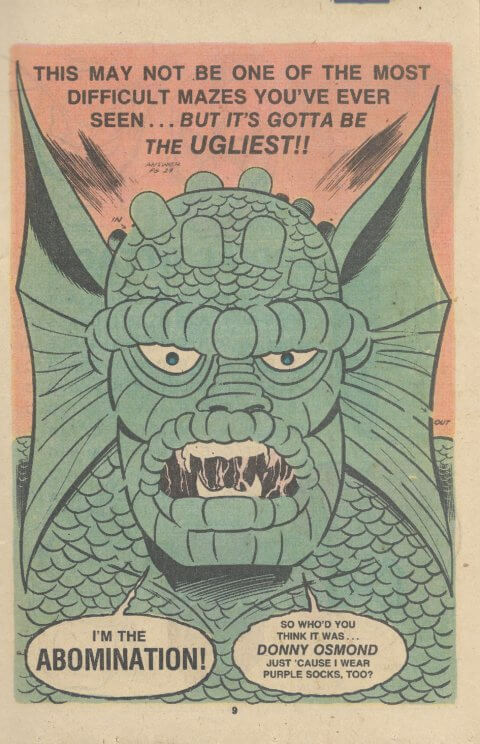
One example of this is found in issue # 8 where he uses Groot as a springboard to present wordplay concerning tree-related terms. Of course, today Groot is a well-known character due to being featuring in the MCU, but in the late 1970s was a little-used villainous monster.
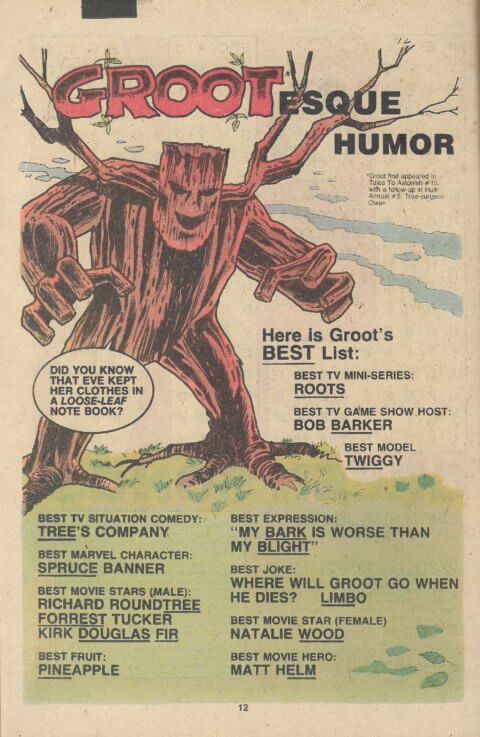
In a way, Fun and Games Magazine acts as a bit of a turn of the decade time capsule. References to television shows and celebrities from the era now come across as quite dated. Perhaps no puzzle in the series is quite as dated as this one featuring Razorback (the crime-fighting alter ego of muscular trucker, Buford Hollis):
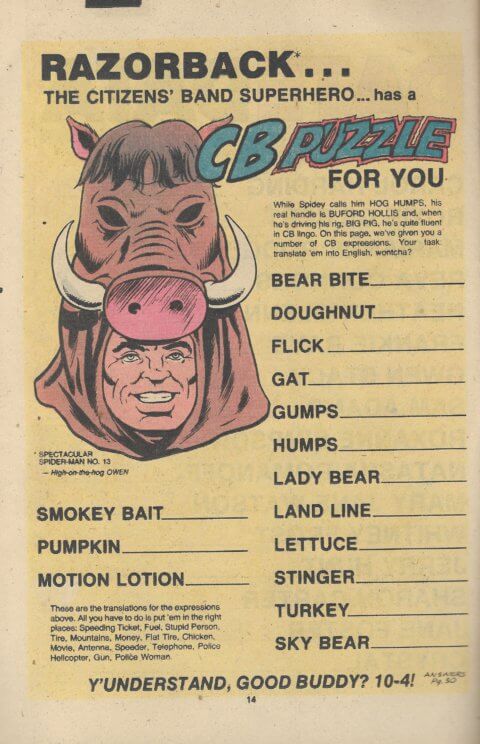
Here, Razorback’s “CB Puzzle” is designed to take advantage of the CB radio craze from the 1970s. The idea is for readers to be able to use their knowledge of said craze to decipher this trucker jargon. To modern audiences this entire exercise probably looks very bizarre. However, the CB radio fad is essential 1970s with characters like C.W. McCall, various country music songs and collectible QSL cards being highlights of the craze. Some of the terms shown above (like “doughnut” for “tire”) are still part of modern vernacular. However, others like “motion lotion” and “humps” probably don’t mean what you think they do (they mean “fuel” and “mountains” respectively).
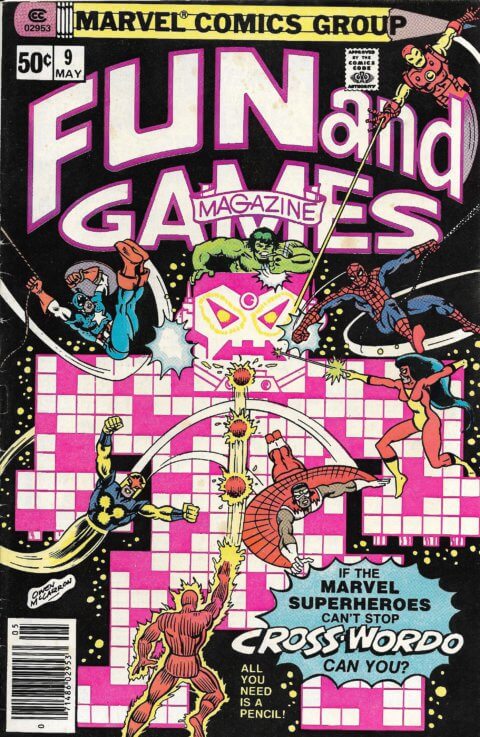
Towards the end of the series’ run, McCarron introduced his only original Marvel character, Cross-Wordo, the evil crossword puzzle. The character appears as a sentient puzzle in a couple of issues and appears on the cover of issue # 9.
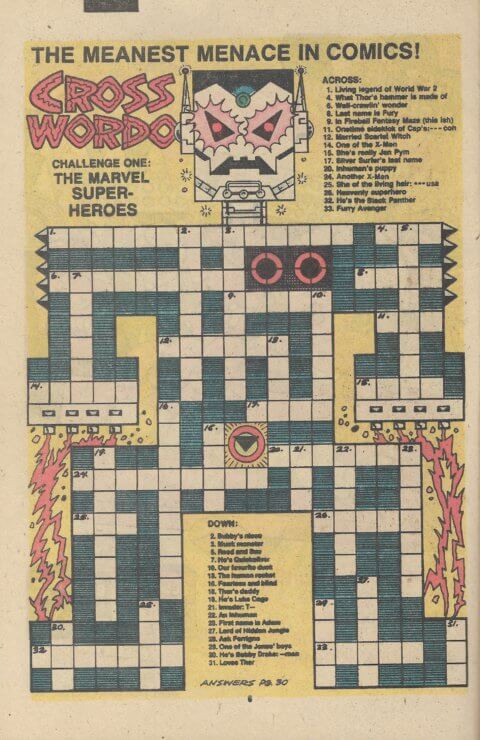
McCarron also started to include material other than puzzles and mazes too. For example, by the middle of its run, Fun and Games Magazine included a feature called “Learn to Draw Marvel Characters,” where a traceable image is provided with a grid pattern.
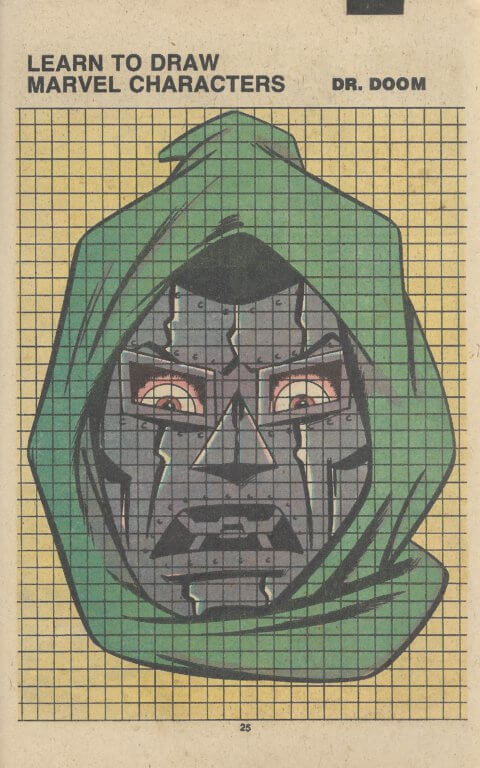
Another interesting feature that appears in the series towards the end of its run is called “Bullpen Biopsy,” which provides humorous interviews with Marvel Comics employees like John Romita, Sr. and Jim Shooter. My favourite is the one depicting Stan Lee:
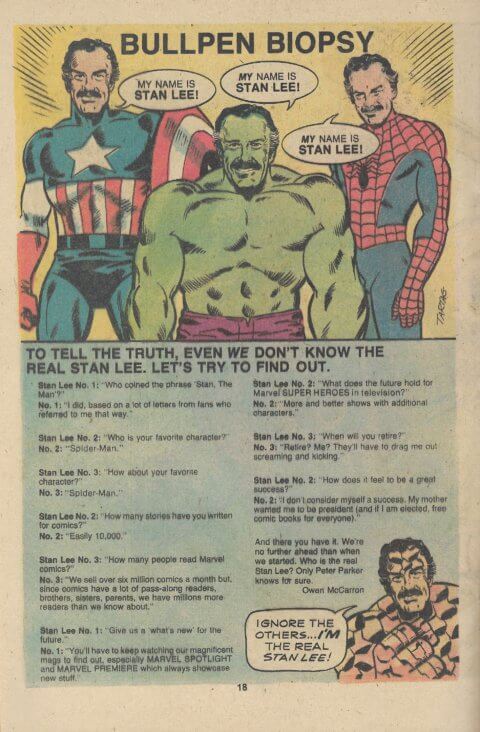
I am not sure why McCarron brought the series to an end with issue # 13. Unfortunately, I do not have that issue on hand. What I do know is that beginning in the early 1980s, McCarron transitioned away from comic books to work on other projects. One of his final comic books from the Canadian Silver Age, Co-op Encounters was released in Halifax in the early 1980s. By this point McCarron was creating numerous colouring books for Whitman and was also in the process of creating Louie the Lightning Bug for the Alabama Power Company, which debuted in 1983. McCarron never stopped drawing, even if his comic book work faded into the background.
From what I understand, Whitman would send McCarron toys for the properties he was supposed to draw without giving him much context and he would have free reign to draw whatever he wanted. Plaid Stallions did a column about his Shogun Warriors colouring books a while back which is worth checking out and resonates with me because I purchased part of McCarron’s Shogun Warriors action figure collection from Cal Johnston a decade ago (though I sold the figures myself quite some time ago).
McCarron’s work is one of the hallmarks of the Canadian Silver Age and is worthy of many more columns. At some point I hope to delve further into his career by looking at some of his lesser-known creations. Fun and Games Magazine is perhaps his best-known work but is just the tip of the iceberg concerning what he achieved as a comic book creator.
I ended my most recent column in March with a bit of a cliffhanger when I declared that I would look at some comics that I had recently acquired after searching for them for more than seven years. Although Fun and Games Magazine could have fit this description (I only acquired these comics recently after many years of looking for copies locally that weren’t marked), I had something completely different in mind. I don’t want to give it away, but my goal is to present that material next time around.
Until then, thanks for reading!

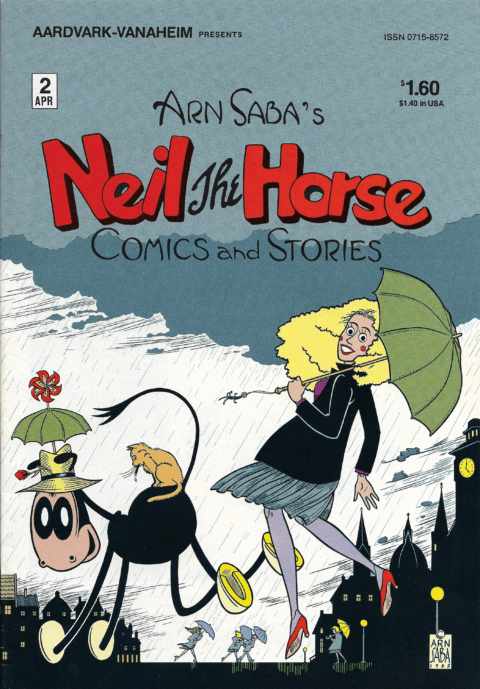
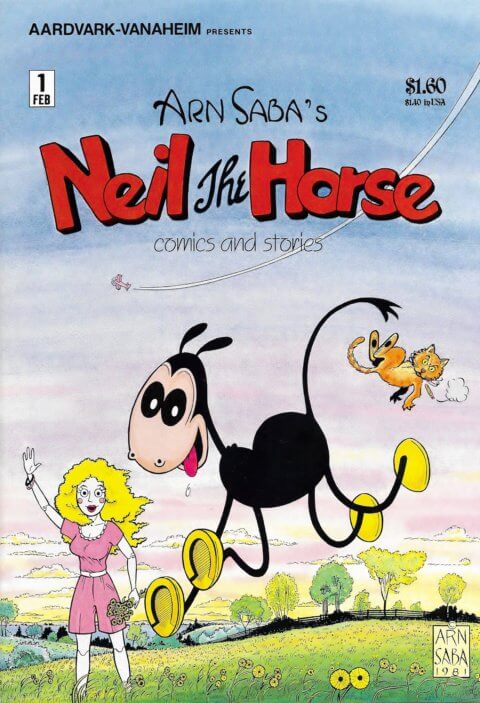
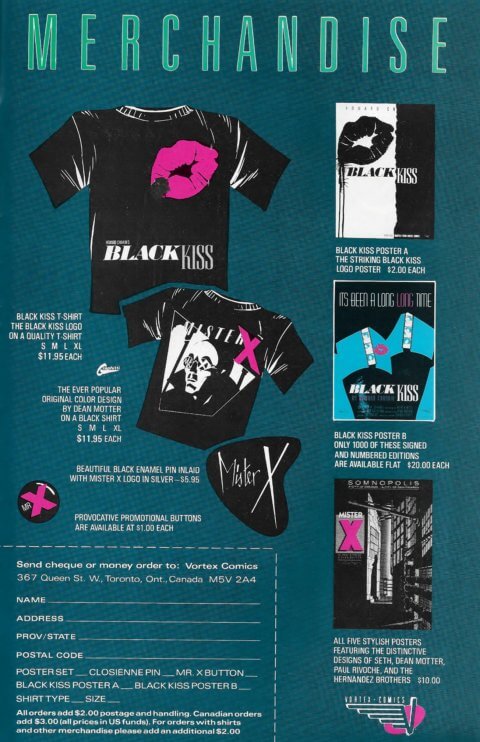
Thanks for putting those up. I loved game pages. He did alright.
Glad you enjoyed the puzzle pages, Ron.
I loved this topic Brian. Thank you for bringing to my attention this Canadian Superstar
Thanks for commenting, David. Owen McCarron’s work is often overlooked and definitely deserves more recognition. I will definitely highlight more of his comic creations in time.
That was a great article and good luck to your endeavors as well!
Thanks, Gerald!
Awesome article Brian and thanks for still giving us Fun whilst you can!